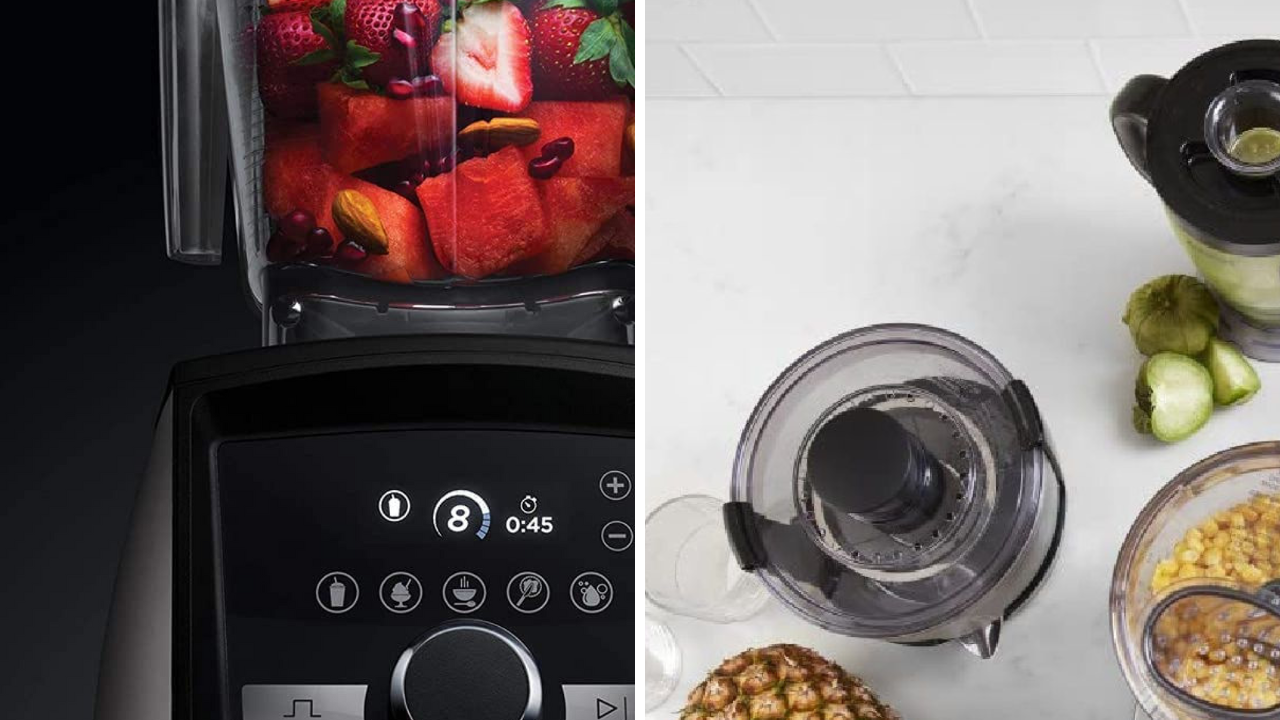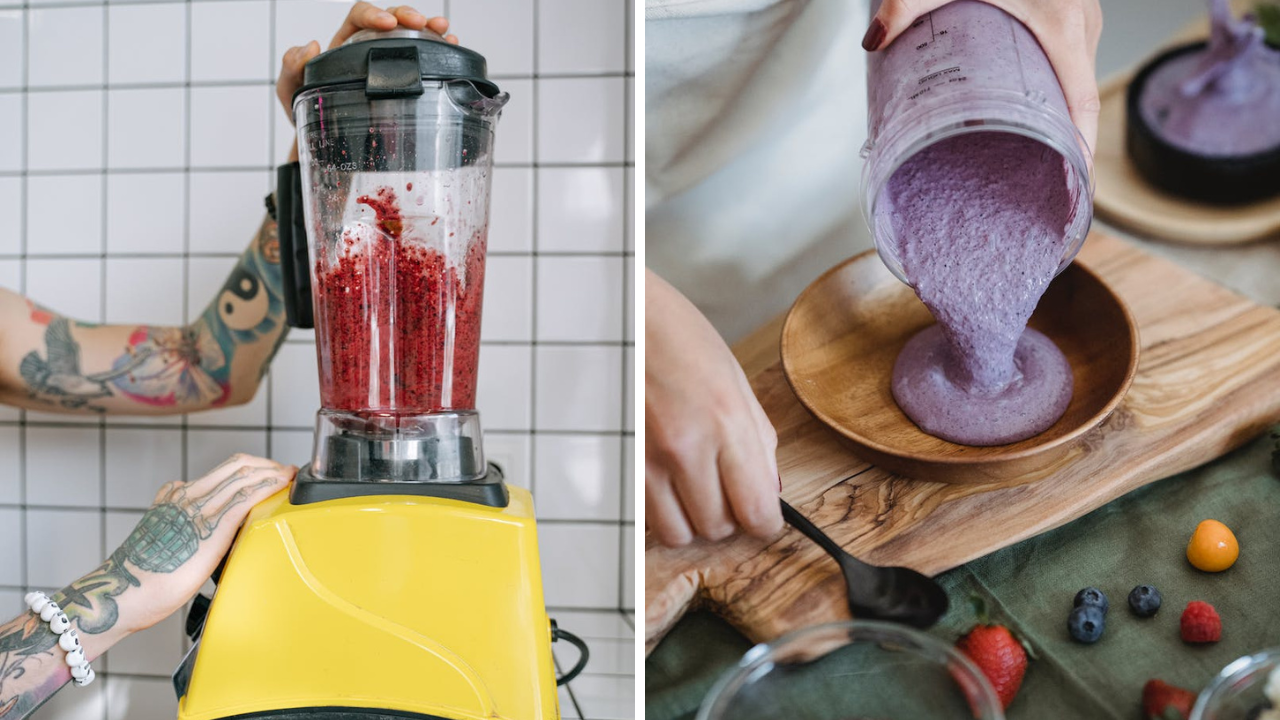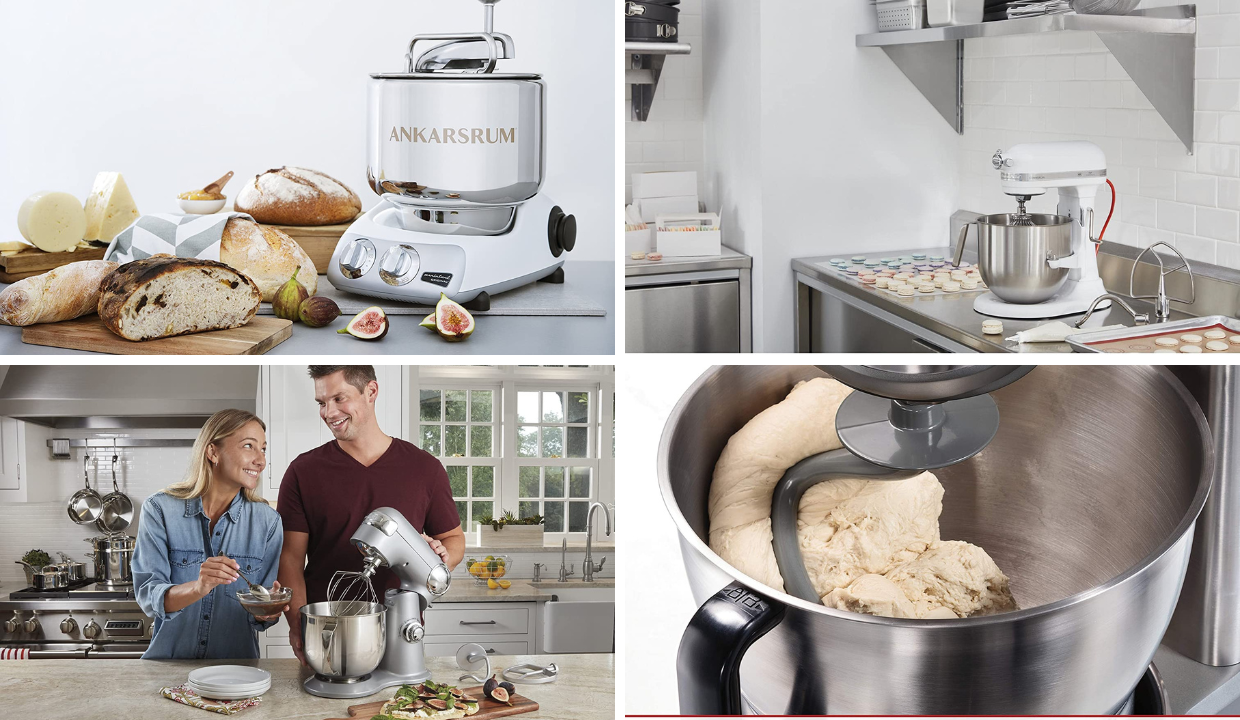An immersion blender is a versatile kitchen tool that can be used to make a variety of different dishes.
From smoothies to soups, an immersion blender can quickly and easily puree ingredients to create a smooth and creamy texture.
However, if you've never used an immersion blender before, it can be a bit intimidating to get started.
Understanding how an immersion blender works and taking the proper safety precautions is essential before you begin using it.
Once you've assembled your immersion blender and are ready to get started, there are a few key techniques to keep in mind to ensure that you get the best results possible.
In this article, we'll cover everything you need to know to use an immersion blender like a pro, from assembly and disassembly to maintenance and troubleshooting common issues.
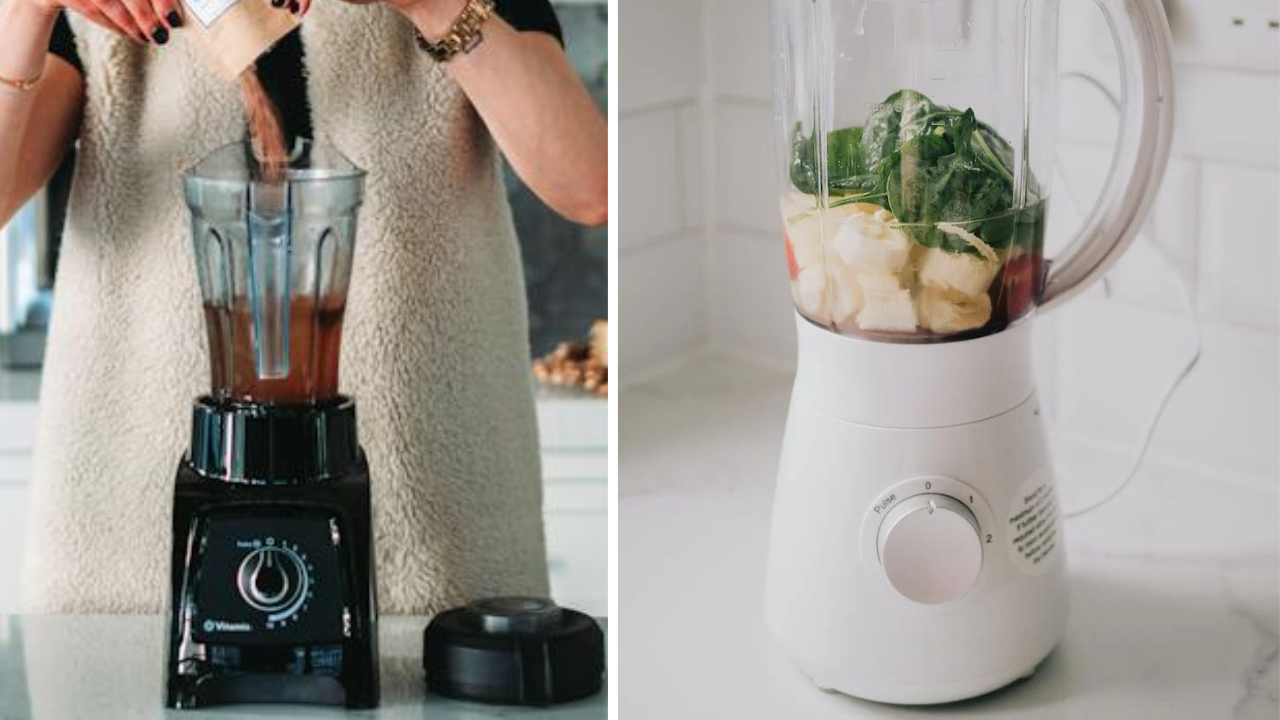
Key Takeaways
- Understanding how an immersion blender works and taking proper safety precautions is essential before use.
- To use an immersion blender, hold it at a slight angle and move it up and down in a circular motion.
- Always clean and store your immersion blender properly to ensure that it lasts for years to come.
Understanding Immersion Blenders
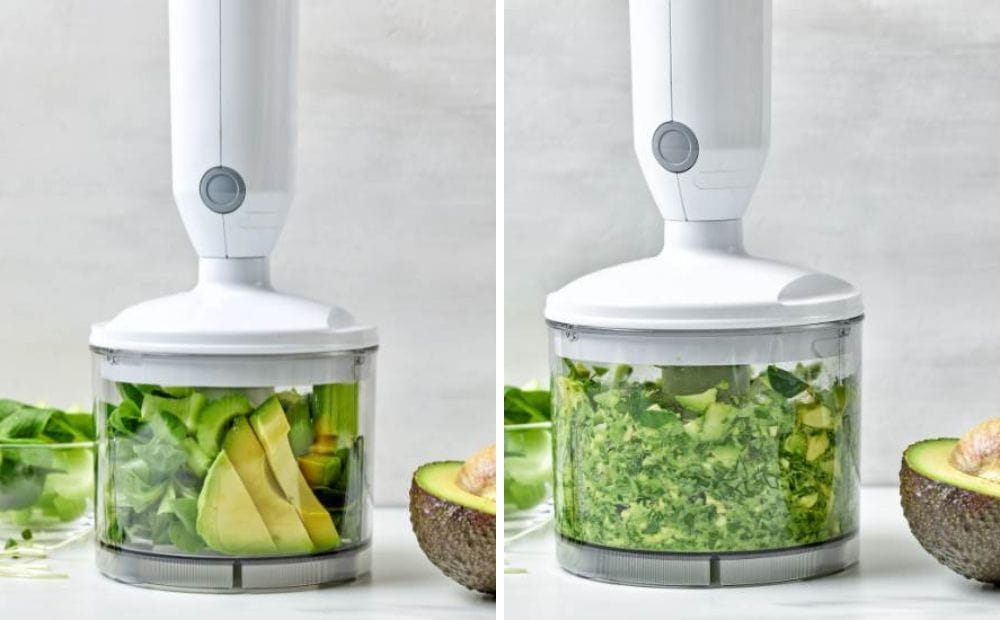
Using a handheld blender to make salad dressing
An immersion blender, also known as a hand blender or stick blender, is a kitchen appliance used to blend ingredients directly in a container or pot.
It is a handheld device that consists of a motor and a blending attachment that is immersed into the food or liquid being blended.
Immersion blenders are versatile and can be used for a variety of tasks such as making smoothies, pureeing soups, whipping cream, and even making mayonnaise.
They are also easy to use and clean, making them a popular choice among home cooks and professional chefs alike.
When choosing an immersion blender, it is important to consider the power of the motor, the length of the blending arm, and the type of blending attachment.
A more powerful motor will be able to handle tougher ingredients, while a longer blending arm will allow for blending in deeper pots or containers.
Different types of blending attachments, such as a whisk or chopper, can be used for different tasks.
To use an immersion blender, simply immerse the blending attachment into the food or liquid being blended and turn on the motor.
Move the blender up and down to ensure that all ingredients are evenly blended. Be careful not to lift the blender out of the liquid while it is still running, as this can cause splattering.
Overall, an immersion blender is a useful tool for any kitchen and can make blending tasks quick and easy.
Safety Precautions
When using an immersion blender, it is important to take certain safety precautions to avoid accidents.
Here are a few guidelines to follow:
- Always unplug the immersion blender before cleaning or attaching/detaching the blades.
- Never immerse the motor unit in water or any other liquid. Only the detachable parts, such as the blending shaft and blades, can be immersed in water.
- Never use the immersion blender with wet hands or when standing in water.
- Avoid using the immersion blender near heat sources, such as stovetops or ovens.
- Do not try to blend hard or frozen foods, as this can damage the blades or motor.
- Always use the immersion blender in a stable position, and avoid leaning it against the sides of pots or bowls.
By following these safety precautions, users can ensure a safe and enjoyable experience when using an immersion blender.
Assembly and Disassembly of an Immersion Blender
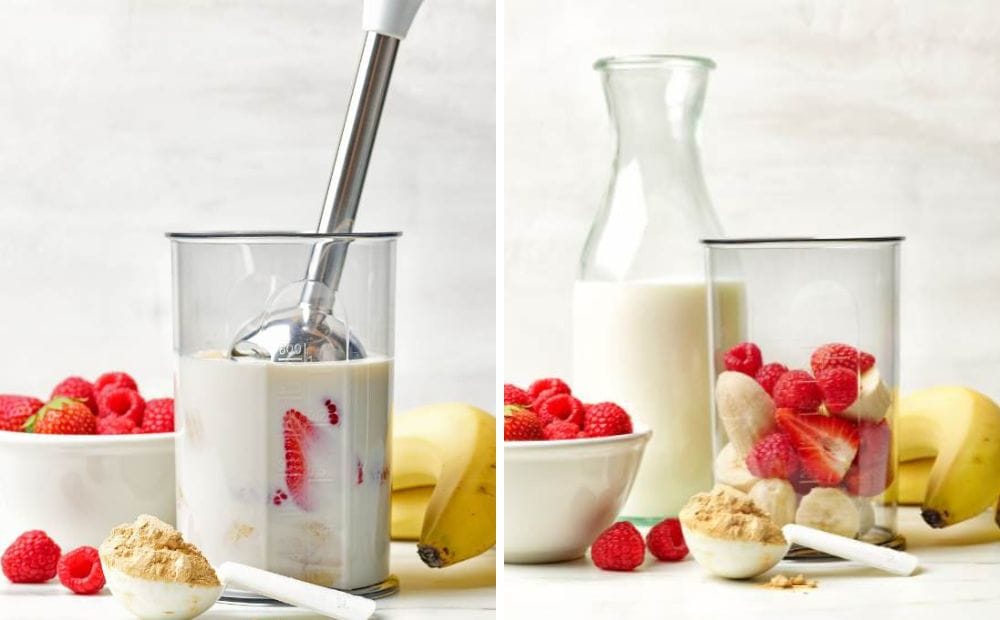
Making a smoothie with an immersion blender
Assembling the Blender
Assembling an immersion blender is a simple process that can be completed in just a few steps. First, ensure that all the components are clean and dry. Then follow these steps:
- Attach the blending attachment to the motor unit by inserting it into the slot and twisting it to lock it in place.
- Connect the power cord to the motor unit.
- Attach any additional attachments, such as a whisk or chopper, by inserting them into the slots and twisting them to lock them in place.
- Finally, plug the power cord into an electrical outlet.
Disassembling the Blender
Disassembling an immersion blender is just as easy as assembling it. Follow these steps:
- Unplug the power cord from the electrical outlet.
- Remove any additional attachments by twisting them to unlock them and pulling them out of the slots.
- Twist the blending attachment counterclockwise to unlock it and remove it from the motor unit.
- Clean all the components and dry them thoroughly.
It is important to note that some immersion blenders have removable blades that need to be detached before cleaning.
Refer to the manufacturer's instructions for specific details on how to remove and clean the blades.
When assembling or disassembling an immersion blender, always make sure that the power cord is unplugged to avoid any accidents.
How to Use an Immersion Blender
An immersion blender, also known as a hand blender or stick blender, is a versatile kitchen tool that can be used to blend, puree, and emulsify ingredients.
Here are the steps to follow when using an immersion blender:
Preparation
Before using an immersion blender, it is important to prepare the ingredients and equipment. Here's what to do:
- Cut the ingredients into small pieces to ensure they blend smoothly.
- Choose a container that is deep enough to allow the immersion blender to submerge completely.
- Plug in the immersion blender and make sure it is securely attached to the power source.
Blending Process
Using an immersion blender is a simple process. Follow these steps:
- Submerge the immersion blender into the container with the ingredients.
- Turn on the immersion blender and move it in a circular motion to blend the ingredients.
- If necessary, move the immersion blender up and down to ensure all the ingredients are blended evenly.
- Continue blending until the desired consistency is achieved.
Post-Blending Cleanup
Cleaning up after using an immersion blender is quick and easy. Here's what to do:
- Turn off and unplug the immersion blender.
- Remove the blending attachment from the motor unit.
- Rinse the blending attachment under running water to remove any food residue.
- Use a mild detergent and a soft sponge to clean the blending attachment.
- Dry the blending attachment thoroughly before storing it.
By following these simple steps, anyone can use an immersion blender to create delicious and healthy meals and snacks.
How to Use an Immersion Blender to Make a Creamy Soup | Peas and Hoppiness
Maintenance and Storage
Cleaning the Blender
Proper cleaning of the immersion blender is essential to keep it in good working condition.
After each use, unplug the blender and detach the blending wand from the motor unit. Rinse the wand under running water to remove any food particles or debris that may have accumulated during blending.
For tough stains or residue, fill a container with warm water and a few drops of dish soap.
Immerse the wand in the soapy water and turn on the blender for a few seconds. Rinse the wand thoroughly and dry it with a clean cloth.
Avoid submerging the motor unit in water. Instead, wipe it with a damp cloth to remove any spills or stains.
Do not use abrasive cleaners or scrubbers on the blender as they can damage the surface.
Storing the Blender
When not in use, store the immersion blender in a dry and cool place. Keep it away from direct sunlight or heat sources as they can damage the motor and plastic parts.
Wrap the cord of the blender around the motor unit and secure it with a rubber band or twist tie. This will prevent the cord from tangling and getting damaged.
If possible, store the blender in its original packaging or in a protective case to prevent dust and debris from accumulating on the surface.
Troubleshooting Common Issues
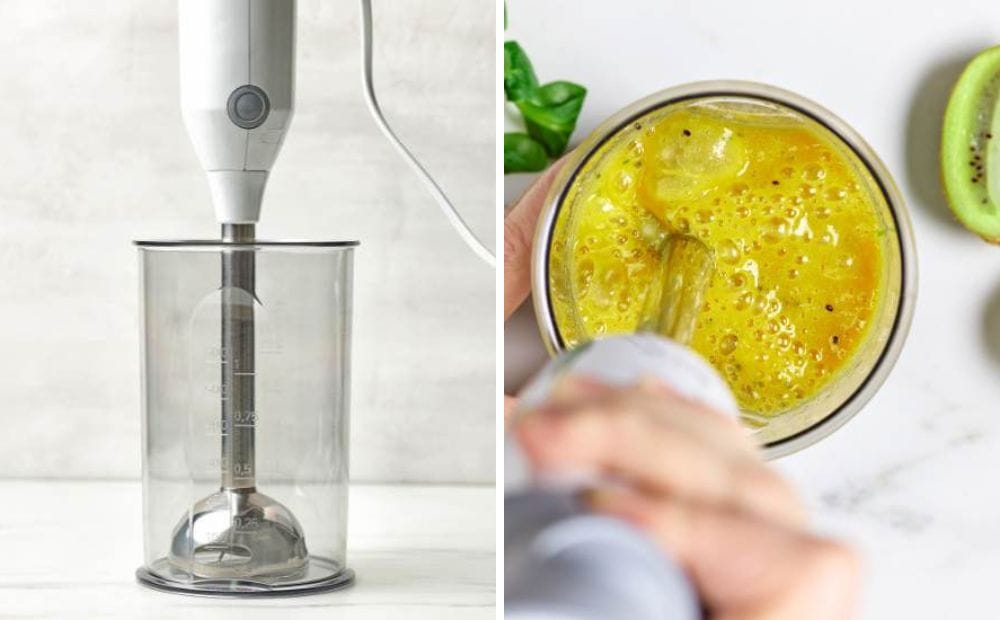
Using an immersion blender
Blender Not Turning On
If the immersion blender is not turning on, there are a few things that could be causing the issue.
First, check to make sure the blender is properly plugged in and the outlet is functioning correctly. If the outlet is not working, try plugging the blender into a different outlet.
If the blender is properly plugged in and the outlet is working, check to make sure the immersion blender is properly assembled. If any part of the blender is not properly attached, it may not turn on.
Refer to the manufacturer's instructions for proper assembly.
If the blender is still not turning on, there may be an issue with the motor. In this case, it may be necessary to contact the manufacturer for troubleshooting or repair.
Blender Overheating
If the immersion blender is overheating, it may be due to a few different factors.
First, make sure the blender is not being used for an extended period of time without a break.
Immersion blenders are not meant to be used continuously for more than a few minutes at a time.
Another factor that could cause overheating is using the blender on a setting that is too high for the type of food being blended.
Refer to the manufacturer's instructions for recommended settings for different types of foods.
If the blender continues to overheat, it may be necessary to contact the manufacturer for troubleshooting or repair.
Frequently Asked Questions
How do you use an immersion blender for soup?
To use an immersion blender for soup, first, make sure the soup is cooked and cooled slightly. Then, submerge the immersion blender into the soup and turn it on. Move the blender around in the soup until it is blended to the desired consistency.
Can you use immersion blender in hot soup?
Yes, immersion blenders can be used in hot soup. However, it is important to exercise caution when doing so to avoid splatters and burns. It is recommended to let the soup cool slightly before using the immersion blender.
Should immersion blender touch bottom?
It is not necessary for the immersion blender to touch the bottom of the bowl or pot, but it is important to keep the blender submerged in the liquid to avoid splatters.
What kind of bowl to use with immersion blender?
It is recommended to use a tall and narrow container, such as a measuring cup or a tall mixing bowl, to use with an immersion blender. This will help prevent splatters and make it easier to blend the ingredients.
How to make ice cream with immersion blender?
To make ice cream with an immersion blender, blend together frozen fruit, milk, and sweetener until smooth. Freeze the mixture for a few hours until it reaches the desired consistency.
What are some immersion blender hacks?
Some immersion blender hacks include using it to make homemade whipped cream, blending smoothies directly in a travel cup, and making mayonnaise or salad dressing in a jar.
If you are in the market for a new blender, then check out our articles and top picks:
